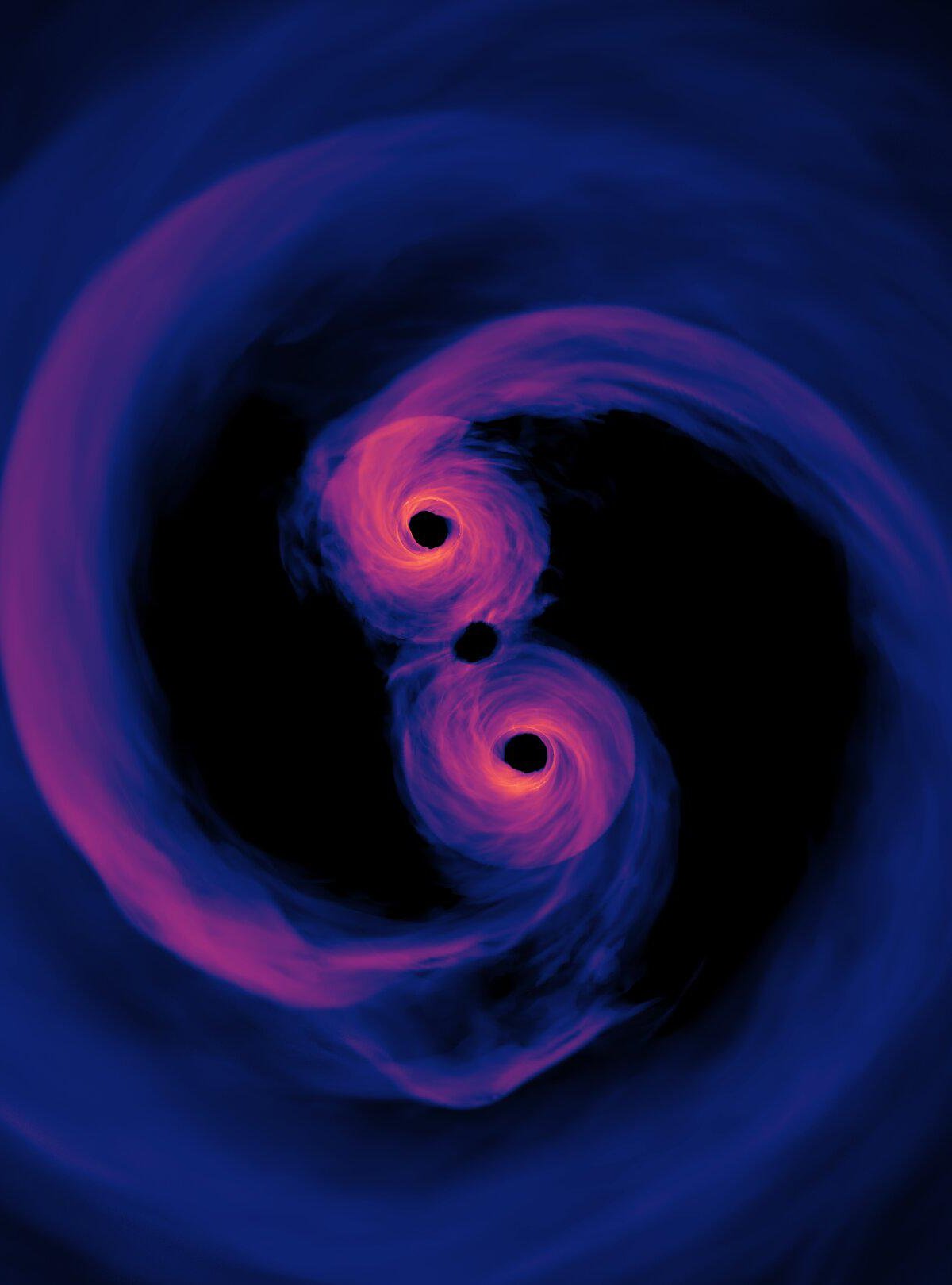The grandly titled study, recently published in Physical Review Letters, “Self-interacting dark matter solves the ultimate parsec problem of supermassive black hole mergers” It proposes a solution to an unsolved question in astrophysics: In an exhausted star system, what force could cause a binary of two supermassive black holes (SMBHs) to merge?
The new methodology to solve the problem involves unprecedented mathematical modeling, which, according to the study, includes in the equation for the first time the existence of self-interacting dark matter particles that cluster around supermassive black holes and provide the friction needed for them to travel the final distance between them.
“We showed that including the previously neglected dark matter effect can help with supermassive black holes,” Gonzalo Alonso-Álvarez of the University of Toronto in Canada, the paper’s first author, said in a statement. to cross this last parsec of separation and reunion“. According to the physicist, his team’s work provides a different explanation than previously thought.
The last parsec problem in black hole evolution
Based on a wealth of observational and theoretical evidence, the scientific community accepts that supermassive black holes are at the center of most galaxies, and that when two of them collide, the respective cosmic monsters orbit each other. This approach initiates the loss of orbital energy, which is converted into kinetic energy of the stars and gases interacting with the binary system.
For supermassive black holes to merge, the reduction of orbital separation is essential. However, this collision process is still poorly understood, because once these space objects reach a distance of one parsec (the equivalent of about 3.2 light-years), their galactic neighborhoods are “exhausted.” The orbit of SMBHs is stabilized without orbital perturbationsBut for how long?
Scientists say there has been at least as much time as there has been of the Universe, which brings us to the last parsec problem: How do supermassive black holes manage to merge?So how do they get past the point where energy loss becomes inefficient once they reach a distance of 3.2 light years?
How could dark matter help black holes merge?
The idea that SMBHs never merged was rejected by the detection of a humming gravitational wave background, huge ripples in the fabric of space-time caused by the changing speed of large masses. What is not yet seen (because we have no way of seeing it) is dark matter, but previous models ignored this because its particles would also be thrown very far away.
Like good scientists, Alonso-Álvarez and his colleagues decided to test this through mathematical models. In simulations, they discovered what they called dark matter interacting with itself. (includes possibility of non-gravitational interactions)could be the missing piece to the puzzle.
This is because among these additional interactions, dark matter particles may experience elastic collisions. Although these do not involve electromagnetic forces, another hypothetical type of force could cause changes in the speed and trajectory of particles, redistributing energy and momentum and ultimately Provides “support” for supermassive black holes to merge by creating dense structures in binary systems.
The discoveries, which are still highly theoretical, could indirectly provide a new tool for understanding the mysteries of dark matter. Based on the premise that “the evolution of black hole orbits is very sensitive to the microphysics of dark matter,” Alonso-Álvarez explains that observations of SMBHs and their mergers could be a laboratory for understanding these mysterious particles.
Liked the content? Stay up to date with more work like this on TecMundo. Until later!
Source: Tec Mundo
I’m Blaine Morgan, an experienced journalist and writer with over 8 years of experience in the tech industry. My expertise lies in writing about technology news and trends, covering everything from cutting-edge gadgets to emerging software developments. I’ve written for several leading publications including Gadget Onus where I am an author.













